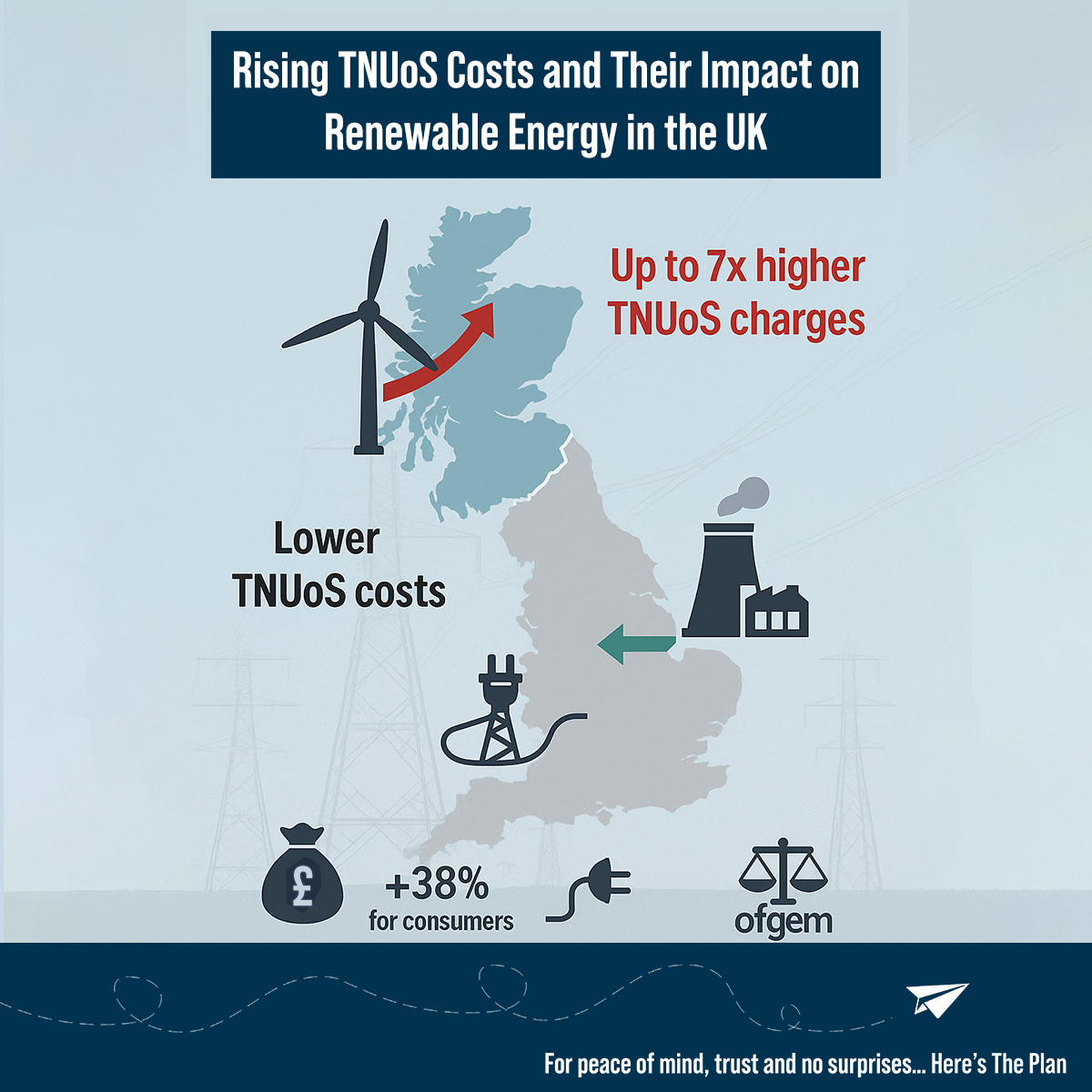What are TNUoS charges?
Transmission Network Use of System (TNUoS) charges are the fees electricity generators and users pay to access and use the UK’s high-voltage transmission network. These charges are split into two parts:
- Residual charges: fixed costs shared among users.
- Locational charges: variable costs depending on where electricity is used or generated.
What’s driving the increase?
A key structural driver of rising TNUoS charges is the growing number of renewable generators, many of which are located in remote or offshore regions due to resource availability. These areas often have low local demand, meaning electricity must be transported long distances to reach population centres, incurring higher costs. As a result, remote renewable generators – especially in the far north of the UK – can face TNUoS charges up to seven times higher than similar generators in the south. This geographic pricing imbalance not only raises overall system costs but also risks discouraging investment in renewables, undermining the UK Government’s Clean Power 2030 Action Plan.
Additionally, ongoing investments in transmission infrastructure to support renewable integration are contributing to higher charges. Major projects like Eastern Green Link 1 and 2 and Yorkshire Green are necessary to expand capacity and ensure system reliability as more renewables connect. However, these projects are funded through TNUoS, pushing costs further upward for users and generators alike.
Big Increase for Customers
They are set to rise significantly in the 2026–27 charging year. The National Energy System Operator (NESO) recently published draft tariffs forecasting a 38% average increase for a typical Low Voltage Site Specific Residual Band 2 (LVSS RB2) customer. Regional increases range from 35% in London to 40% in the South West.
These increases are primarily driven by a £1.01 billion rise in revenue to be collected through demand charges. The bulk of this (almost 99%) will be recovered through residual charges, which are fixed daily fees shared among users. These increases are still based on provisional assumptions, as final revenue allowances for transmission owners will not be confirmed until Winter 2025.
Changes to Locational Charges
Another part of the TNUoS bill – locational charges – also rose, though less significantly. These vary by region and reflect the cost of delivering power to and from different areas. In 2026–27, the South West is expected to see a 54% increase in locational charges, while the Eastern region could see a 43% decrease. Such differences arise due to changes in local demand, generation patterns, and transmission system flows.
Is this fair and what does OFGEM say?
In response to these concerns, Ofgem has proposed a temporary “cap-and-floor” mechanism to bring greater fairness and predictability to TNUoS charging. The proposed cap would limit how much a remote renewable generator could be charged, while the floor would limit the credits received by more centrally located, non-renewable generators, especially in the south. Ofgem introduced the idea in a recent letter to NESO, aiming to reduce investor uncertainty and ensure that renewable generation remains attractive despite rising costs.
The full implementation details of this cap-and-floor model are still under review. However, it represents an important regulatory step in protecting clean energy development from unintended consequences of the current charging system.
☎️ 01738474630
✉️ theteam@herestheplan.co.uk










